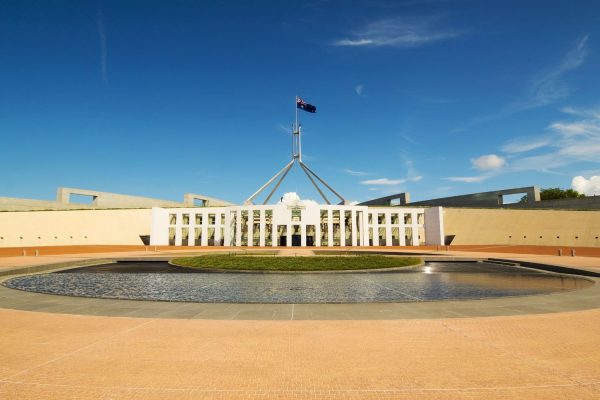The need for leadership research in Australia
Against a backdrop of unethical conduct, irresponsible leadership and distrust of institutions, there is a growing expectation that leaders and institutions should create value not just for themselves but for society as a whole. There is a yearning for a culture of leadership in politics, business, and elsewhere that serves, and is seen to serve, the greater good.
The Australian Leadership Index (ALI) is a new measure of public perceptions and expectations of leadership for the greater good from institutions across the government, public, private and not-for-profit sectors.
The purpose of the ALI is threefold:
- To serve as a representative measure of public perceptions of leadership for the greater good.
- To describe and track public expectations of leadership for the greater good.
- To provide insight into what different institutions and sectors should do in order to improve public perceptions of their practice of leadership for the greater good.
Click the button below to download the full report in PDF format.
Key findings
- Overall, the public takes a dim view of the state of leadership for the greater good in Australia. The majority of Australians feel that institutions and sectors do not do enough to lead for the greater good.
- There is a significant gap between public perceptions and expectations across all indicators of leadership for the greater good across all sectors. Australian institutions are not living up to the expectations of the general public.
- At the sector-level, the government sector is perceived as the worst performer in terms of leadership for the greater good, followed closely by the private sector. By contrast, the public sector is seen as showing the most leadership for the greater good.
- At the institution-level, charitable organisations are perceived as showing the most leadership for the greater good. In stark contrast, the Federal Government is perceived as showing the least leadership for the greater good.
- Community expectations of leadership for the greater good are highest for the government sector, and especially of the Federal Government. By contrast, community expectations are lowest for the private sector, especially of Small and Medium-sized Enterprises.
- The most pronounced gaps between perceptions and expectations of leadership relate to the accountability, transparency and ethicality of institutional leadership. This finding is consistent across the government, public, private and not-for-profit sectors alike.
- The strongest predictors of public perceptions of leadership for the greater good are related to perceptions of how institutional leaders create value for their stakeholders. The more institutional leaders appear to demonstrate accountability, transparency and ethicality, the more they are perceived to show leadership for the greater good.
- Being informed matters. The more knowledgeable people are about an institution, the more favourable their perceptions of that institution’s leadership for the greater good.
- Local is better. Small-medium enterprises (SMEs) are more positively perceived than national businesses, which are more positively perceived than multinationals. Local governments are more positively perceived than state governments, which are more positively perceived than the Federal Government.
- Men and women perceive some institutions differently. Men tend to provide much more favourable ratings for the public health system and the Federal Government. Women tend to provide more favourable ratings for SMEs.
Conclusions
Due to unethical conduct, irresponsible leadership and distrust of institutions, there is pervasive sense that we are not well served by those who collectively manage, govern and lead our institutions. Concomitant with this is widespread expectation that leaders and their institutions should create value not just for select stakeholders but for society as a whole.
This sentiment is amply reflected in the findings of the 2019 Australian Leadership Index. This landmark study of public perceptions and expectations of leadership for the greater good in the government, public, private and not-for-profit sectors provides, for the first time, a holistic assessment of the perceived state of leadership for the greater good in Australian institutions. This study reveals that the public has nuanced beliefs about the purpose of different types of institutions, which is reflected in meaningful variations in community expectations of institutions within and across the government, public, private and not-for-profit sectors. Thus, although gaps between perceptions and expectations are found for all institutions, these gaps provide important insights to institutional leaders about the areas they can address to become more closely aligned with community standards of leadership for the greater good.
To help institutional leaders identify priority areas to address in order to improve public perceptions of leadership for the greater good, this study revealed the key predictors or drivers of these perceptions at the overall, sector and institutional level. From this flow a series of clear and actionable insights about what leaders
can do to show leadership for the greater good.
Notably, this study revealed that public perceptions of how institutional leaders create value for their stakeholders are the strongest predictors of public perceptions of leadership for the greater good. This is observed consistently at the overall level, at the sector level and at the level of specific institutions. The more accountable, transparent and ethical institutional leaders and their institutions appear, the more they are perceived to show leadership for the greater good.
Despite the clarity about the drivers of public perceptions of leadership for the greater good, the study also revealed the complexity of leadership for the greater good. For example, the simultaneous pursuit of social and economic goals is not straightforward even in the most benign conditions. Similarly, it is not obvious how to be alive and responsive to the interests of key constituents and society, equally and simultaneously. The practice of leadership for the greater good is riven with incompatible goals and tensions. Leadership for the greater good is essential, but paradoxical, and therefore not easy.
Continual measurement of public expectations and perceptions of leadership for the greater good through the Australian Leadership Index provides institutions with a way to develop and test initiatives to improve the level of leadership for the greater good they are seen to display.



